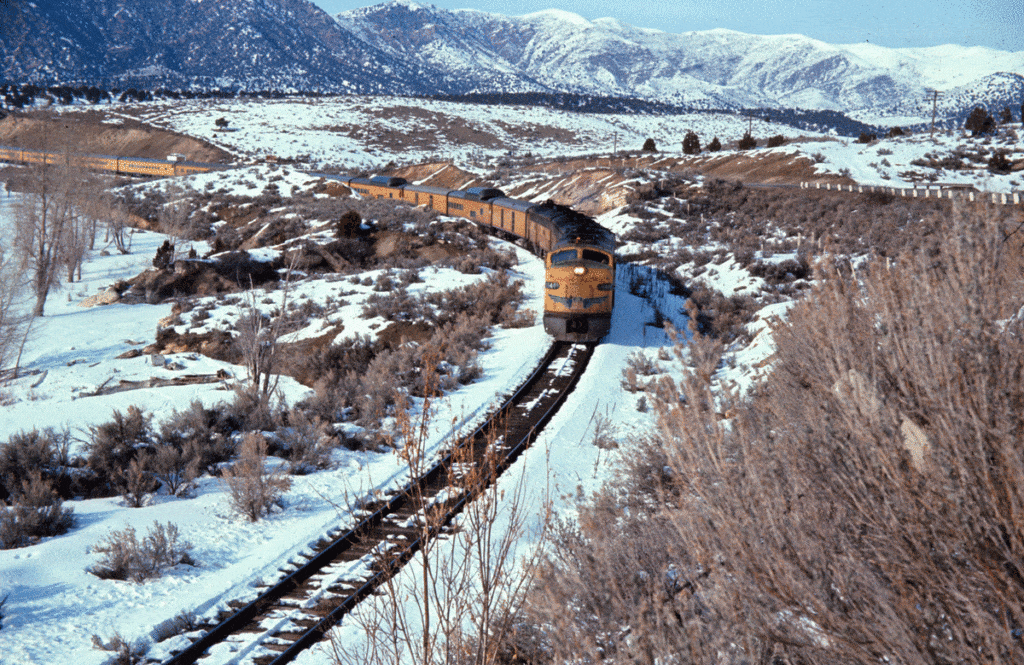Dating back to the 1930s, Park City promoted itself as a destination for winter sports. The Salt Lake City Junior Chamber of Commerce, the Park City Winter Sports committee and the Denver & Rio Grande Railroad were willing partners in running “ski trains” to Park City.
Trains typically departed Salt Lake at 8am, made a stop in Sugarhouse, proceeded up Parley’s, through Synderville, and arrived in Deer Valley at approximately 11am. The return trip departed before 6pm and arrived in Salt Lake by 8pm. Food and beverages were served in the commissary cars round trip. The route followed the Denver & Rio Grande branch that served the mines in what we now call “lower” Deer Valley.
The ski trains coincided with Park City’s Winter Carnival held at Snow Park, the city’s first commercial ski area. Activities included skiing, tobogganing, snow rolling, snow balling and kite flying. The trains and Carnival were popular –upwards of 600 tickets were sold.
The Denver & Rio Grade operated these excursions until abandoning their Salt Lake to Park City line entirely in 1946. At that time, Park City was struggling economically. By the 1950s, the Mayflower and Ontario were the last two operating mines. In some families, three generations had worked the mines, but it was doubtful there would a similar opportunity for a fourth. The mineral bounty of the mountains was nearing an end.
United Park City Mines, formed when most of the area’s mines consolidated in 1953, owned surface rights to 10,000 acres. Faced with economic challenges, the company decided to diversify its business interests by taking advantage of predictable and copious snowfall. In 1962, UPCM obtained a $1.2 million federal redevelopment loan to build and operate a ski resort. Thus began the transition to a resort-based economy. The aptly named Treasure Mountains Resort opened in 1963.
Two years later, Utah submitted a bid for the 1972 Winter Olympics with the new resort in Park City as the cornerstone for the initiative. The state collaborated with the Union Pacific Railroad and local Chambers of Commerce to organize a special passenger train in December 1965. It would be the first scheduled passenger train to Park City since the early 1950s.

Credit: Copyright Don Strack, 1969, used with permission
The “Hootspa Special,” as it was called, was a public relations and party train designed to promote good times, Utah and Park City as worthy candidates for the Olympics. The guest list included movie stars, sports heroes, politicians, business leaders, and travel agents from major cities with direct flights to Salt Lake. The train sold out to over 300 people.
The Union Pacific provided their finest equipment. There were three engines and ten cars including a bar car, dining car, and two baggage cars customized to accommodate music and dancing. Federally regulated railroads were exempt from local liquor laws, meaning alcohol served on the Hootspa Special was not subject to Utah’s restrictive laws. Yes, boozy drinks were served!
Join us next week to learn more. All aboard for Park City!